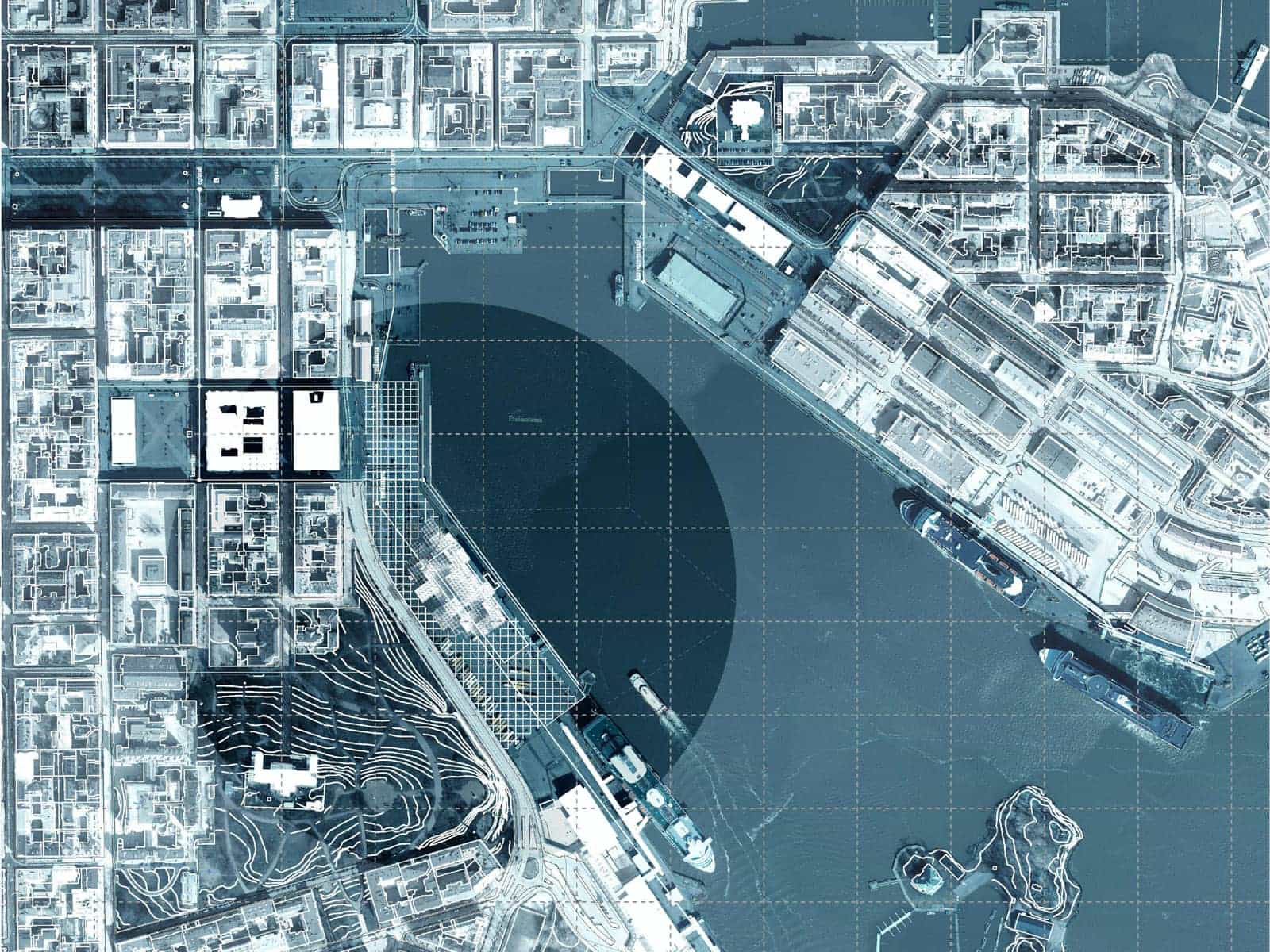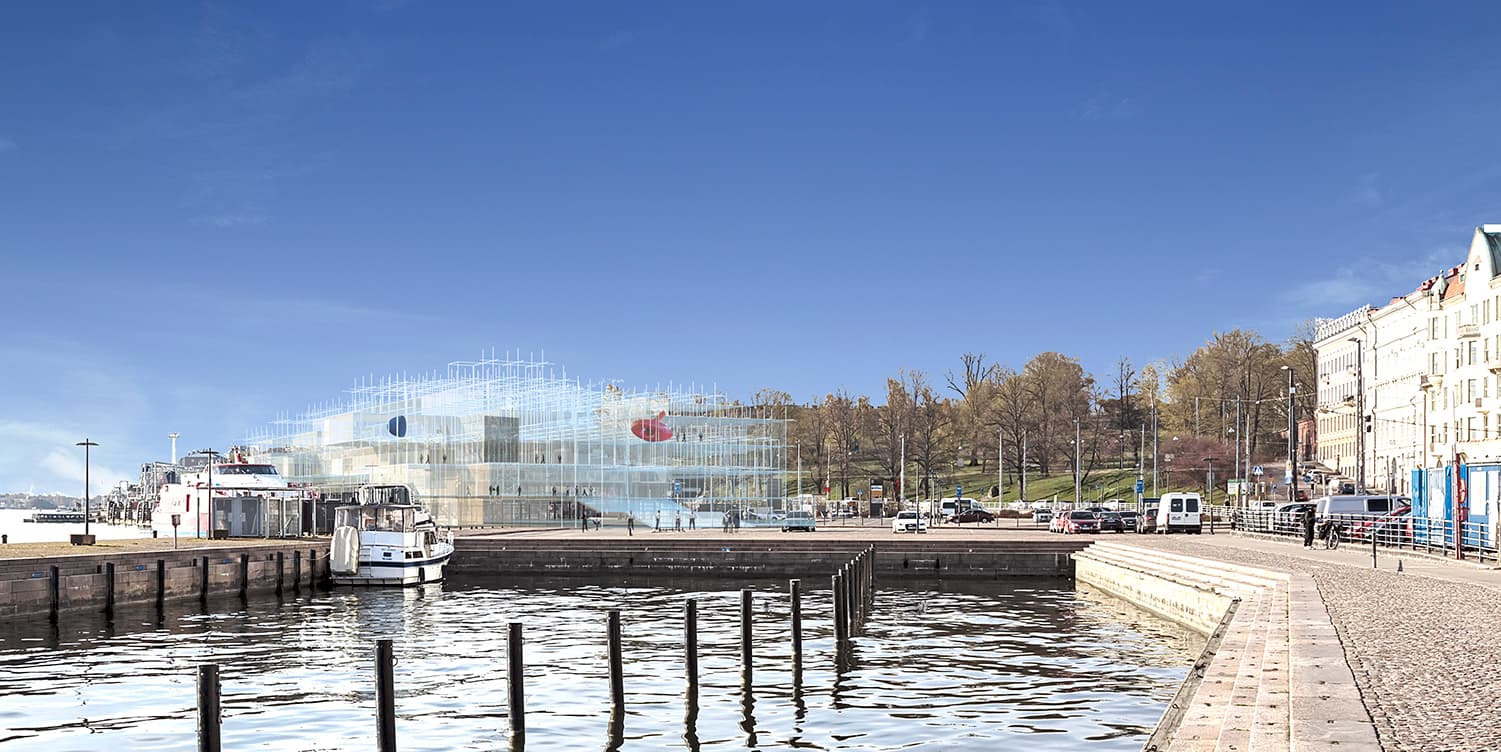



Guggenheim museum in Helsinki
location:
Helsinki
FINLAND
with:
Arch. Zhang Qinyi
Arch. Günter Pusch
client:
Guggenheim
year:
2015
program:
museum
status:
competition
Helsinki
FINLAND
with:
Arch. Zhang Qinyi
Arch. Günter Pusch
client:
Guggenheim
year:
2015
program:
museum
status:
competition
A FACTORY
Besides the exhibition, the production of art has been never so influential to our society than today. The way how a piece of art is made, including the material, the technology, and the people who are involved in the production, often constructs a significant part (even completely in some cases) of the art itself. The Guggenheim Factory intends to establish a direct relationship between the production and the exhibition, to present the complete body of the art.
The building creates three spaces: a "factory" on the ground floor, and an intermediate floor in the middle with entrances, offices, maintenance and storage space, and pure exhibition space on the top floor. Open to the front square of the museum, the "factory" space is located exactly under the exhibition floor. The "one to one" relation in position and dimension manifests the same importance of the two. It is a gigantic space surrounded by grids of structure and facing the water. It provides not only a space but also an atmosphere of a factory or a shipyard, a feeling that inspires one to create. The flexible Performance/Conference Hall, the art storage and office enter the factory space on the intermediate level, create a visual and circulative connection between the production, discussion, performing, storage and management of art.
A WAVE
Instead of positioning the arts into anonymous rooms separated from each other and the environment, the Guggenheim Factory presents them in a continuous wave. The wave is composed of structural units in modular 2m, 4m and 8m. In the middle of the units, materials with different transparency are installed. The whole structure forms an organic form, and also functions as a "filter" in between the exhibition space and its environment. The views and lights penetrate the space through different levels of transmittance and reflection, which gives a natural, unique but also the controllable interior environment. At the same time, the "wave" filters, reproduces and transmits the image of the art to the outside, in which way the art intervenes into the city.
A SAPACE
Adjacent to an urban fabric made out of heavy urban blocks and squares, the Guggenheim Factory invents a third type of space. Located on the frontier of the city, the Tähtitorninvuoren puisto and the Eteläsatama, the new museum is an extremely porous and open "block" which blurs the border of the two. The space for art, the waterfront, the urban fabric, and nature are mixed here into one dynamic space. It is a museum where one can experience the art in the city life, in wild nature, in the long brightness and the same long darkness, in the warm sun but also the cold wind, in the sound of the ships, the wave and the "factory". It is a museum in Helsinki, like no other.
Besides the exhibition, the production of art has been never so influential to our society than today. The way how a piece of art is made, including the material, the technology, and the people who are involved in the production, often constructs a significant part (even completely in some cases) of the art itself. The Guggenheim Factory intends to establish a direct relationship between the production and the exhibition, to present the complete body of the art.
The building creates three spaces: a "factory" on the ground floor, and an intermediate floor in the middle with entrances, offices, maintenance and storage space, and pure exhibition space on the top floor. Open to the front square of the museum, the "factory" space is located exactly under the exhibition floor. The "one to one" relation in position and dimension manifests the same importance of the two. It is a gigantic space surrounded by grids of structure and facing the water. It provides not only a space but also an atmosphere of a factory or a shipyard, a feeling that inspires one to create. The flexible Performance/Conference Hall, the art storage and office enter the factory space on the intermediate level, create a visual and circulative connection between the production, discussion, performing, storage and management of art.
A WAVE
Instead of positioning the arts into anonymous rooms separated from each other and the environment, the Guggenheim Factory presents them in a continuous wave. The wave is composed of structural units in modular 2m, 4m and 8m. In the middle of the units, materials with different transparency are installed. The whole structure forms an organic form, and also functions as a "filter" in between the exhibition space and its environment. The views and lights penetrate the space through different levels of transmittance and reflection, which gives a natural, unique but also the controllable interior environment. At the same time, the "wave" filters, reproduces and transmits the image of the art to the outside, in which way the art intervenes into the city.
A SAPACE
Adjacent to an urban fabric made out of heavy urban blocks and squares, the Guggenheim Factory invents a third type of space. Located on the frontier of the city, the Tähtitorninvuoren puisto and the Eteläsatama, the new museum is an extremely porous and open "block" which blurs the border of the two. The space for art, the waterfront, the urban fabric, and nature are mixed here into one dynamic space. It is a museum where one can experience the art in the city life, in wild nature, in the long brightness and the same long darkness, in the warm sun but also the cold wind, in the sound of the ships, the wave and the "factory". It is a museum in Helsinki, like no other.



